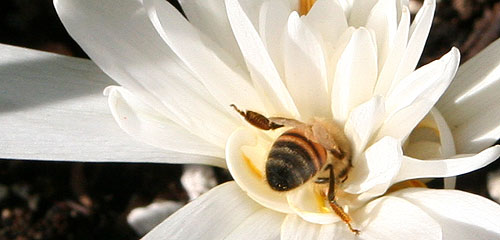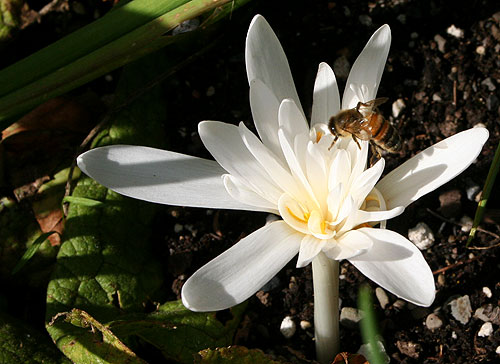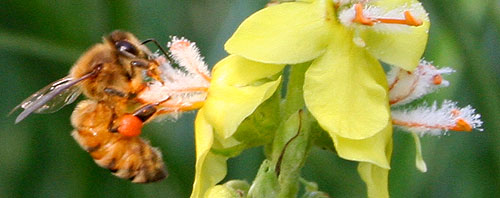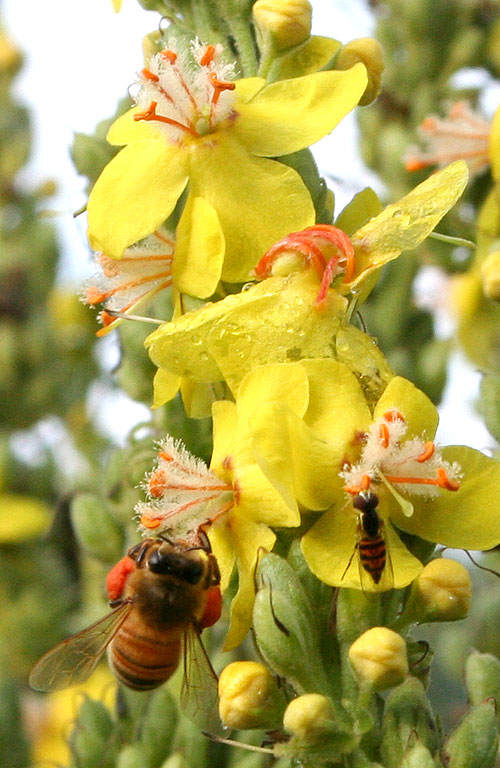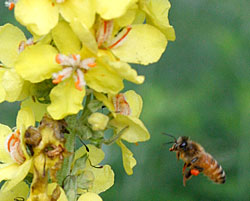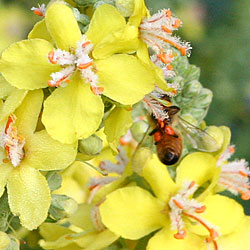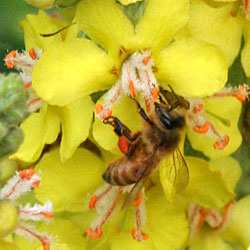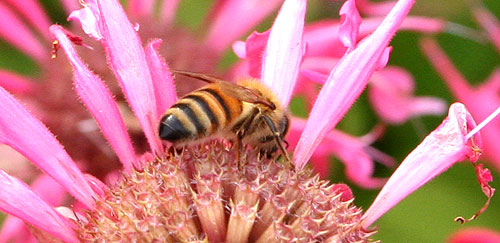
Score another one for biodiversity. Â Seems like I recall someone pointing out that narrow honeybee genetics might be one of the contributing factors to colony collapse disorder. (Read more pollinator posts.)
From a Cornell Chronicle article summarizing a paper in the July 20 issue of Science:
To study the reasons for honeybees’ promiscuity, the Cornell biologists inseminated 12 queens with sperm from 15 drones (a different set for each) and nine additional queens with sperm from a single drone (but a different one in each case). They then prompted the hives to swarm in early June to form new colonies.
“After only two weeks of building new nests, the genetically diverse colonies constructed 30 percent more comb, stored 39 percent more food and maintained foraging levels that were 27 to 78 percent higher than genetically uniform colonies,” said Mattila.
By the end of the summer, the genetically diverse colonies had five times more bees, eight times more reproductive males and heavier average body weights, mostly because of larger amounts of stored food.
By winter’s end, 25 percent of the genetically diverse colonies survived to their one-year anniversary (only about 20 percent of new honeybee colonies make it that long in upstate New York). But all of the genetically uniform hives starved to death.
“These differences are noteworthy considering colonies had similarly sized worker populations when they were first formed,” said Mattila. “Undoubtedly, our results reveal enormous benefits of genetic diversity for the productivity of honeybee colonies.”
And don’t miss Amy’s great post about bee gardening over at GardenRant, including this video from KQED:


